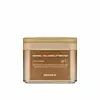What's inside
What's inside
 Key Ingredients
Key Ingredients

 Benefits
Benefits

 Concerns
Concerns

 Ingredients Side-by-side
Ingredients Side-by-side

Water
Skin ConditioningDipropylene Glycol
HumectantGlycereth-26
HumectantNiacinamide
SmoothingGlycerin
Humectant1,2-Hexanediol
Skin ConditioningDiphenyl Dimethicone
EmollientTriethylhexanoin
MaskingHydroxyacetophenone
AntioxidantHydrogenated Lecithin
EmulsifyingPolyglyceryl-10 Oleate
Skin ConditioningCentella Asiatica Extract
CleansingDipotassium Glycyrrhizate
HumectantSodium Citrate
BufferingAllantoin
Skin ConditioningOctyldodeceth-16
EmulsifyingCitric Acid
BufferingDisodium EDTA
Polyglyceryl-10 Laurate
Skin ConditioningJuniperus Virginiana Oil
MaskingButylene Glycol
HumectantArtemisia Vulgaris Oil
PerfumingPogostemon Cablin Leaf Oil
MaskingMadecassoside
AntioxidantRosmarinus Officinalis Leaf Oil
MaskingViola Odorata Leaf Extract
MaskingCentella Asiatica Root Extract
Skin ConditioningCentella Asiatica Leaf Extract
Skin ConditioningSaccharomyces Ferment
Skin ConditioningMangifera Indica Fruit Extract
Skin ConditioningLactobacillus Ferment
Skin ConditioningAsiaticoside
AntioxidantMadecassic Acid
Skin ConditioningAsiatic Acid
Skin ConditioningWater, Dipropylene Glycol, Glycereth-26, Niacinamide, Glycerin, 1,2-Hexanediol, Diphenyl Dimethicone, Triethylhexanoin, Hydroxyacetophenone, Hydrogenated Lecithin, Polyglyceryl-10 Oleate, Centella Asiatica Extract, Dipotassium Glycyrrhizate, Sodium Citrate, Allantoin, Octyldodeceth-16, Citric Acid, Disodium EDTA, Polyglyceryl-10 Laurate, Juniperus Virginiana Oil, Butylene Glycol, Artemisia Vulgaris Oil, Pogostemon Cablin Leaf Oil, Madecassoside, Rosmarinus Officinalis Leaf Oil, Viola Odorata Leaf Extract, Centella Asiatica Root Extract, Centella Asiatica Leaf Extract, Saccharomyces Ferment, Mangifera Indica Fruit Extract, Lactobacillus Ferment, Asiaticoside, Madecassic Acid, Asiatic Acid
Water
Skin ConditioningDipropylene Glycol
HumectantGlycereth-26
HumectantBetaine
Humectant1,2-Hexanediol
Skin ConditioningGlycerin
HumectantDiphenyl Dimethicone
EmollientHydroxyacetophenone
AntioxidantTriethylhexanoin
MaskingHydrogenated Lecithin
EmulsifyingAllantoin
Skin ConditioningOctyldodeceth-16
EmulsifyingPolyglyceryl-10 Oleate
Skin ConditioningSphingomonas Ferment Extract
Skin ConditioningAdenosine
Skin ConditioningDisodium EDTA
Sodium Polyacrylate
AbsorbentHydrolyzed Collagen
EmollientLavandula Angustifolia Oil
MaskingPhytosterols
Skin ConditioningAnthemis Nobilis Flower Oil
MaskingRetinol
Skin ConditioningBeta-Glucan
Skin ConditioningCeramide NP
Skin ConditioningWater, Dipropylene Glycol, Glycereth-26, Betaine, 1,2-Hexanediol, Glycerin, Diphenyl Dimethicone, Hydroxyacetophenone, Triethylhexanoin, Hydrogenated Lecithin, Allantoin, Octyldodeceth-16, Polyglyceryl-10 Oleate, Sphingomonas Ferment Extract, Adenosine, Disodium EDTA, Sodium Polyacrylate, Hydrolyzed Collagen, Lavandula Angustifolia Oil, Phytosterols, Anthemis Nobilis Flower Oil, Retinol, Beta-Glucan, Ceramide NP
 Reviews
Reviews

Ingredients Explained
These ingredients are found in both products.
Ingredients higher up in an ingredient list are typically present in a larger amount.
1,2-Hexanediol is a synthetic liquid and another multi-functional powerhouse.
It is a:
- Humectant, drawing moisture into the skin
- Emollient, helping to soften skin
- Solvent, dispersing and stabilizing formulas
- Preservative booster, enhancing the antimicrobial activity of other preservatives
Allantoin is a soothing ingredient known for its protective and moisturizingg properties. Because of this, it is often added to products with strong active ingredients.
Studies show higher concentrations of this ingredient can promote wound healing.
Though it can be derived from the comfrey plant, allantoin is produced synthetically for cosmetic products to ensure purity.
Learn more about AllantoinDiphenyl Dimethicone is a type of silicone.
Dipropylene Glycol is a synthetically created humectant, stabilizer, and solvent.
This ingredient helps:
Dipropylene glycol is technically an alcohol, but it belongs to the glycol family (often considered part of the ‘good’ alcohols). This means it is hydrating and gentle on skin unlike drying solvent alcohols like denatured alcohol.
As a masking agent, Dipropylene Glycol can be used to cover the smell of other ingredients. However, it does not have a scent.
Studies show Dipropylene Glycol is considered safe to use in skincare.
Learn more about Dipropylene GlycolDisodium EDTA plays a role in making products more stable by aiding other preservatives.
It is a chelating agent, meaning it neutralizes metal ions that may be found in a product.
Disodium EDTA is a salt of edetic acid and is found to be safe in cosmetic ingredients.
Learn more about Disodium EDTAGlycereth-26 is a synthetic ingredient and polyethylene glycol ether of Glycerin. Glycerin is already naturally found in your skin and helps keep your skin moisturized.
It is a humectant and helps add texture to products. It can make your product thicker.
As a humectant, it helps draw moisture from the air to your skin. This helps your skin stay hydrated.
Learn more about Glycereth-26Glycerin is already naturally found in your skin. It helps moisturize and protect your skin.
A study from 2016 found glycerin to be more effective as a humectant than AHAs and hyaluronic acid.
As a humectant, it helps the skin stay hydrated by pulling moisture to your skin. The low molecular weight of glycerin allows it to pull moisture into the deeper layers of your skin.
Hydrated skin improves your skin barrier; Your skin barrier helps protect against irritants and bacteria.
Glycerin has also been found to have antimicrobial and antiviral properties. Due to these properties, glycerin is often used in wound and burn treatments.
In cosmetics, glycerin is usually derived from plants such as soybean or palm. However, it can also be sourced from animals, such as tallow or animal fat.
This ingredient is organic, colorless, odorless, and non-toxic.
Glycerin is the name for this ingredient in American English. British English uses Glycerol/Glycerine.
Learn more about GlycerinHydrogenated Lecithin is created from the hydrogenation of lecithin (a group of phospholipids). Hydrogenation is a chemical reaction between hydrogen and another element.
This ingredient is an emollient and emulsifier. As an emollient, it helps soften skin by trapping moisture within. As an emulsifier, it prevents oil and water ingredients from separating.
Hydroxyacetophenone is antioxidant with skin conditioning and soothing properties. It also boosts the efficiency of preservatives.
This ingredient is not irritating or sensitizing.
Octyldodeceth-16 comes from the fatty-alcohol Octyldodecanol.
Emulsifers keep oils and water ingredients together to create a more even consistency.
Polyglyceryl-10 Oleate isn't fungal acne safe.
Triethylhexanoin is created from glycerin and 2-ethylhexanoic acid. It is a solvent and emollient.
As a solvent, Triethylhexanoin helps dissolve ingredients to stable bases or help evenly distribute ingredients throughout the product.
It is also an emollient and helps condition the skin.
Learn more about TriethylhexanoinWater. It's the most common cosmetic ingredient of all. You'll usually see it at the top of ingredient lists, meaning that it makes up the largest part of the product.
So why is it so popular? Water most often acts as a solvent - this means that it helps dissolve other ingredients into the formulation.
You'll also recognize water as that liquid we all need to stay alive. If you see this, drink a glass of water. Stay hydrated!
Learn more about Water